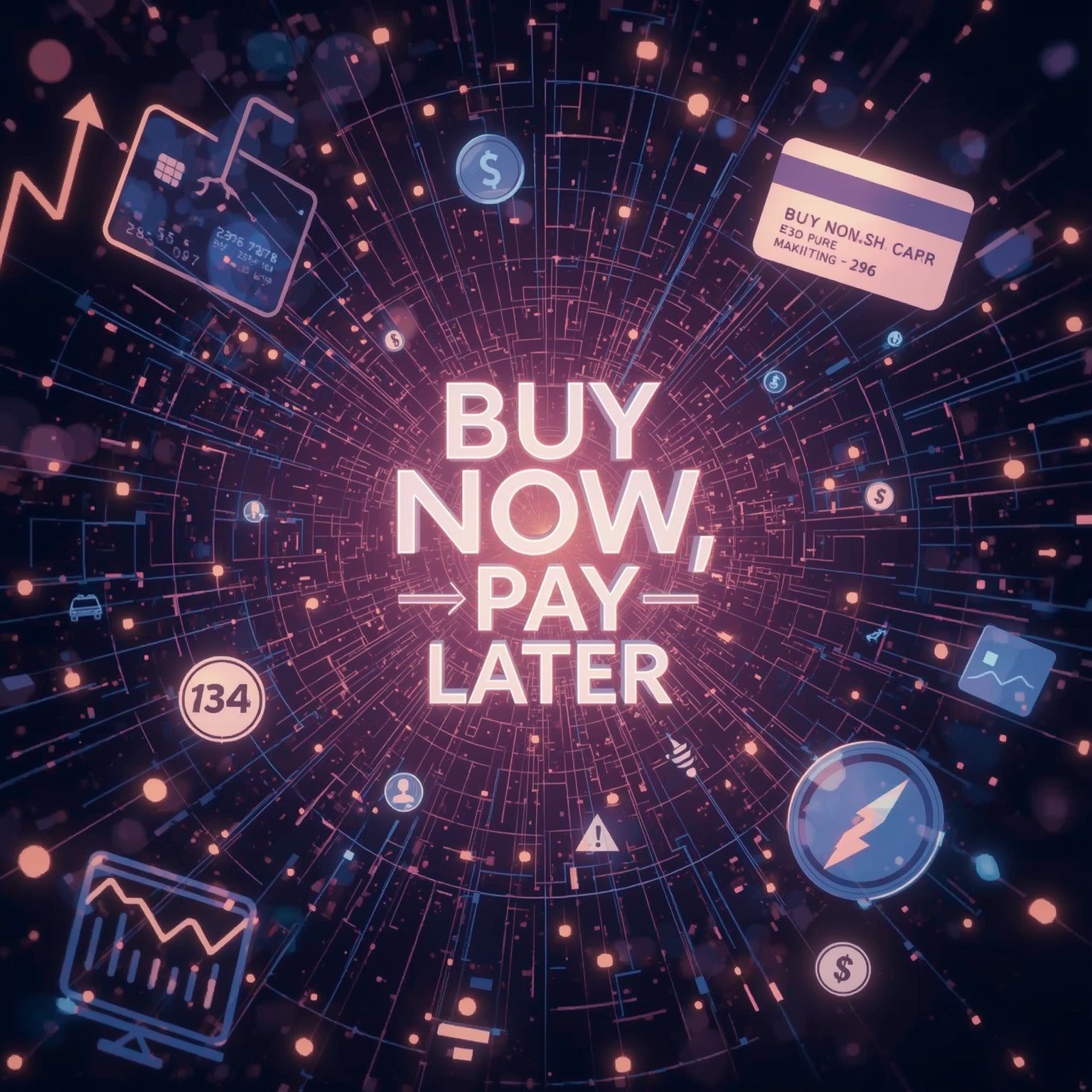When Nigel Morris expresses anxiety about the direction of the global economy, experienced professionals across the financial and technology sectors tend to listen carefully. This reaction is entirely understandable: Morris is no ordinary commentator. As one of the co-founders of Capital One, he fundamentally redefined the landscape of consumer credit by pioneering systems that assessed how much financial strain the average American household could realistically withstand. His innovations in lending to subprime borrowers effectively created a vast and profitable empire built on rigorous data analysis and psychological insight into consumer behavior. Now, many years later, Morris occupies a different position in the financial ecosystem — as an early investor in groundbreaking buy-now-pay-later (BNPL) companies such as Klarna in Europe and Aplazo in Mexico. His unique vantage point offers both historical perspective and contemporary relevance. And from that perspective, what he is witnessing today deeply unsettles him.
Speaking at the Web Summit in Lisbon, Morris shared his unease with striking candor. Observing that consumers are increasingly turning to BNPL services to purchase groceries and other essential items, he interpreted this trend as a distress signal: an unmistakable sign of widespread financial fragility. As he succinctly put it, when people must resort to installment payments to afford basic necessities, it reveals that large segments of the population are struggling simply to stay afloat. His worries are not based on intuition alone; mounting statistical evidence supports his concerns. According to Empower, a financial services firm tracking consumer credit behavior, BNPL usage in the United States has reached an extraordinary 91.5 million users. Of these, roughly one in four have used the installment structure to pay for food — a sobering figure drawn from recent LendingTree survey data.
Originally, BNPL companies promoted their services as a hassle-free way for consumers to finance discretionary pleasures — luxury handbags, specialized electronics, limited-edition sneakers. Today, however, the data reveal a dramatic shift: consumers are using these plans not out of indulgence but necessity. Even more troubling, many borrowers are failing to repay what they owe within the prescribed timeframe. LendingTree’s analysis highlights a worrisome rise in delinquency rates — 42% of users made at least one late payment in 2025, compared with 39% the year before and just 34% the year prior to that. Such a trend suggests not a passing anomaly but an accelerating pattern of financial distress.
What appears at first glance to be an isolated consumer finance story may in truth foreshadow far-reaching consequences. The BNPL boom serves as a canary in the coal mine — a warning mechanism for the broader venture capital-backed fintech sector and potentially the global credit system itself. The parallels to the pre-2008 financial crisis are impossible to ignore, though with one critical distinction: this danger is largely invisible to traditional credit-monitoring mechanisms. Most BNPL firms choose not to report their loans to centralized credit bureaus, creating what regulators have aptly labeled “phantom debt.” This opacity means that borrowers can take out numerous loans across multiple BNPL platforms without any lender being aware of their cumulative exposure. In effect, the credit industry is navigating blindfolded, unable to determine how much hidden leverage lurks beneath the surface.
Recent data from the Consumer Financial Protection Bureau (CFPB) have only deepened that concern. The agency’s 2024 review of major BNPL providers — including Affirm, Afterpay, and Klarna — revealed that nearly two-thirds of borrowers had multiple concurrent loans during the year, while one-third were juggling loans from multiple providers simultaneously. The intensity of borrowing behavior has also increased over time: from 2021 to 2022, the average number of BNPL loans per consumer rose from 8.5 to 9.5, and one-fifth of BNPL users were initiating more than one loan each month. Worryingly, a significant majority of these consumers possess low or subprime credit scores, yet the approval rate for such high-risk borrowers remains a striking 78%.
Morris acknowledges that BNPL debt has not yet escalated into a systemwide catastrophe. The total market size is measured in hundreds of billions rather than trillions of dollars, so it cannot on its own destabilize the economy as mortgage-backed securities once did. Nevertheless, the combination of incomplete transparency, deteriorating borrower quality, and macroeconomic headwinds paints a concerning picture. With inflation’s cumulative impact still pressing on lower-income households, rising auto loan delinquency rates, and sluggish wage recovery among vulnerable populations, these figures are almost certainly worse today than they were several years ago.
Part of the difficulty in tracking these risks stems from shifting regulatory priorities. The Biden administration had sought to classify BNPL as a form of credit similar to credit card payments, thus making it subject to the Truth in Lending Act and its robust disclosure requirements. However, under the subsequent administration, the CFPB retreated from that stance, arguing that these rules imposed undue burdens on companies while offering limited consumer benefit. This regulatory reversal effectively reopened the door to lax oversight — a move widely interpreted as the result of industry lobbying.
Confusingly, the CFPB later released a seemingly contradictory report indicating that among first-time BNPL users, repayment performance remained strong, with a reported 98% payback rate and no conclusive evidence linking BNPL usage to broader financial strain. Yet this optimistic portrayal only underscores the absence of longitudinal data: first-time users are rarely representative of chronic borrowers managing multiple overlapping accounts. This data-gap creates a false sense of security that could delay much-needed intervention.
In response to federal inaction, some state governments have attempted to fill the void through independent initiatives. New York, for example, recently imposed licensing requirements on BNPL firms. Yet Morris and others fear that such fragmented, state-by-state policies create a patchwork easily circumvented by sophisticated multinational financial entities.
When pressed to compare today’s situation with the atmosphere preceding the 2008 collapse, Morris avoided sensationalism but did not dismiss the parallels outright. He acknowledged that key indicators — such as unemployment rising to 4.3%, trade and immigration uncertainty, and widespread hesitance among small and midsized businesses to invest — collectively signal mounting tension within the economy. Added to this mix is the resumption of student loan payments, ending a multi-year moratorium that shielded millions of borrowers. Data from the Congressional Research Service show that over nine million borrowers are already in default or serious delinquency. These combined strains create fertile conditions for smaller, seemingly contained problems to cascade into larger systemic ones.
Morris emphasizes that his concern extends beyond default rates on BNPL loans themselves. The true peril lies in the potential ripple effects through adjacent credit channels. When consumers choose to stay current on smaller BNPL installments, they often neglect larger obligations like auto, credit card, or student loans—thereby transmitting stress throughout the financial system. The Richmond Federal Reserve has underscored this “spillover” risk, warning that BNPL distress can serve as an early indicator of broader credit tightening.
Few observers are as qualified as Morris to assess both the promise and peril of financial innovation. His career bridges two eras: first, as a pioneer who democratized access to credit through data science; and later, as an investor who championed the digital transformation of lending. When asked to delineate the boundary between empowering underbanked consumers and fostering dependence on debt, he paused. The answer, he admitted, remains elusive. He invoked the “mom test,” a principle from his Capital One tenure: if you would not advise your own mother to use a product without hesitation, then it should not be sold to the public. For him, this remains the moral compass of responsible consumer finance.
Unfortunately, BNPL companies often fail that test. Their opacity deprives borrowers of opportunities to build or rehabilitate their credit histories. Many firms intentionally avoid reporting positive payment records to credit bureaus precisely because doing so would allow customers to qualify for cheaper forms of borrowing elsewhere. As Morris put it with characteristic bluntness, some BNPL providers “don’t want the consumer to graduate.”
Meanwhile, the scope of BNPL is expanding exponentially. Klarna—operating as a fully licensed bank in Europe since 2017—has blurred the boundary between fintech and traditional banking. Affirm now issues millions of debit cards that extend BNPL into everyday commerce, while integrations with Apple Pay and Google Pay have made installment credit as effortless as tapping a smartphone. Established players such as PayPal processed over $33 billion in BNPL transactions in 2024, while conventional banks are rapidly introducing their own pay-over-time features. What began as an optional checkout convenience has hardened into a core layer of global financial infrastructure.
Morris has observed a similar transformation among software and platform companies. Increasingly, revenue growth no longer derives from their original products but from embedded finance — from offering payments, insurance, or lending as add-on services. As competitive pressures erode margins in their main businesses, these financial appendages often become the most enduring and profitable components. Entire industries, he warns, are mutating into stealth financial institutions, accumulating credit exposure without commensurate regulatory scrutiny.
Yet even this vast consumer lending story may soon be eclipsed by a more complex sequel. BNPL is now migrating into business-to-business transactions, targeting the enormous trade credit market that underpins commerce between companies. Worth nearly $5 trillion in the United States alone—four times the scale of existing credit card debt—this sector represents BNPL’s next frontier. Early adopters such as Hokodo report that when small firms gain access to installment-based purchasing, their spending jumps by approximately 40%. While that may sound like a boon for growth, it also amplifies corporate leverage and amplifies the potential for unseen, interconnected defaults. Already, BNPL debt is being packaged and resold in asset-backed securities, echoing practices that fueled the subprime mortgage bubble. Major investment firms like Elliott Advisors, KKR, and others have begun acquiring billions in BNPL portfolios.
The resemblance to the financial engineering of the mid-2000s is disquieting: complex layers of securitized obligations built on opaque, risky credit pools. Except this time, much of the underlying debt exists entirely outside conventional visibility.
From my own discussion with Morris and the research surrounding it, one conclusion stands out: while Silicon Valley is captivated by the visible spectacle of the AI investment boom — the trillion-dollar valuations and massive data centers — a quieter, more insidious bubble could be forming in the shadows of consumer finance. The BNPL phenomenon may appear benign, even benevolent, but its expansion among economically fragile populations tells another story. Roughly forty percent of Americans now fall into that “vulnerable” category — individuals financing meals in installments or balancing student loan payments alongside multiple short-term credits.
In an age of exuberant venture spending and celebratory IPOs, it is easy to overlook such warning signs. Yet when personal debt becomes unmanageable, the repercussions will not be confined to households; venture investors and fintech founders themselves will eventually share the burden. For now, Morris is not forecasting imminent collapse, but his message is unmistakable: vigilance, transparency, and ethical restraint must prevail before the financial system once again learns hard lessons in hindsight.
Sourse: https://techcrunch.com/2025/11/16/bnpl-is-expanding-fast-and-that-should-worry-everyone/



